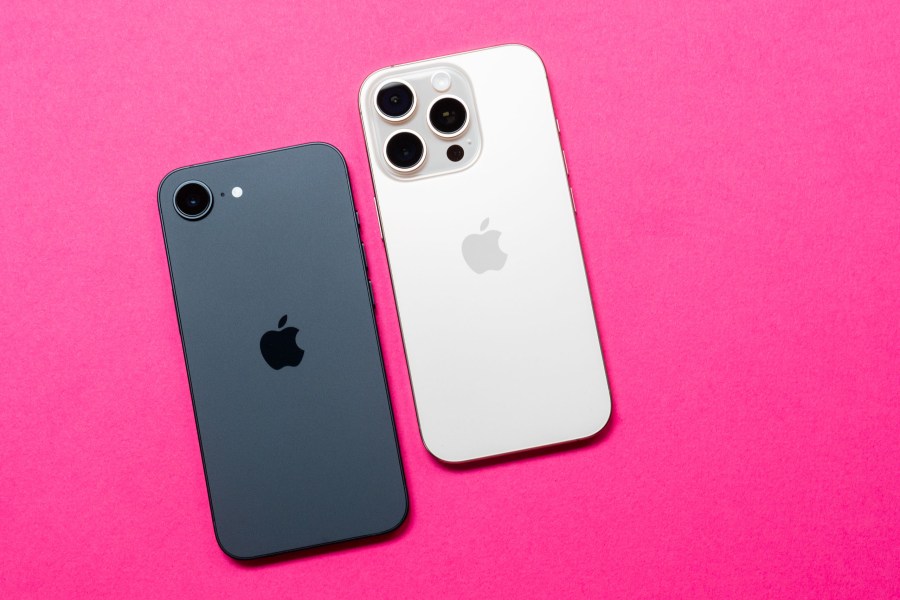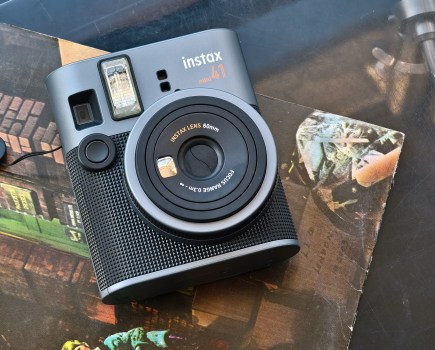If you want the best iPhone for photographers, then you’ll probably naturally gravitate towards the expensive iPhone 16 Pro / Pro Max models. With those, you get a triple lens setup, and a range of shooting functions that are appealing to those that love taking pictures with their phones.
But – how much do you actually need all that stuff? We all coped pretty well with just one lens on our phones for a long time, to save money, would it make sense to go back to that setup?

I’ve been using the iPhone 16 Pro as my personal phone since its release back in September 2025. More often than not, it’s also my camera too. Although I use a huge variety of different other smartphones, cameras and lenses, the iPhone 16 Pro is the one that I’ve used the most in the past six months.
I wanted therefore to see how I would cope if I had t give it up for the cheaper and less capable iPhone 16e – how much would I miss the additional lenses and functions that it gives me? Well – let’s find out.
iPhone 16e vs iPhone 16 Pro: Specs
In the table below, I’ve compared some of the main specs of the iPhone 16 Pro with the iPhone 16e. In bold are the specs which are – on paper at least – better than the other one.
As you’ll see, in terms of the camera, the main difference that there’s three cameras found on the iPhone 16 Pro, and only one on the 16e. Although both the iPhone 16 Pro and the iPhone 16e have a 48MP sensor, we’ve been told it’s not the same sensor. The iPhone 16e has a slightly wider aperture for the lens, but is also slightly shorter, at 26mm compared to 24mm.

Both models output at 24MP as standard, but only the iPhone 16 Pro gives you the ability to shoot in three different image formats: JPEG, HEIF and DNG RAW. With the iPhone 16e you can shoot in either JPEG or HEIF, so if you’re looking for greater editing scope, then you will be out of luck (just to note however, I *never* shoot raw on my iPhone 16 Pro – it’s just not something I’m bothered about doing).
The selfie cameras appear to be the same, while there’s a small difference in the maximum frame rate for 4K video. There’s also no ability to shoot in ProRes format with the iPhone 16e.
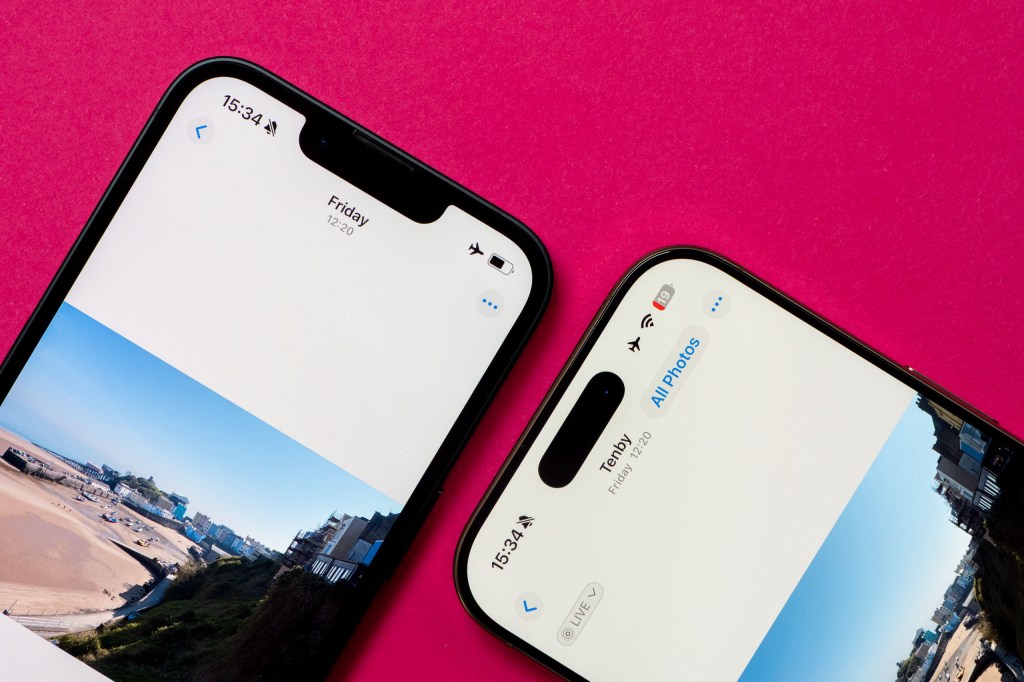
Elsewhere, while both have Portrait mode, the 16e has been restricted to not let you use it for anything other than humans, and there’s also no automatic recognition for portrait subjects either. Another thing which is missing, thanks to the lack of an ultrawide lens is a macro mode.
For photographers, another difference is the lack of a Camera Control button for the iPhone 16e. This is something you can use to take a picture, zoom in and out, and other options, too. In all honesty, I rarely use this on my iPhone 16 Pro. Maybe some folks do, but I’ve never really gelled with it – so I won’t miss it from the 16e, personally. You can use the Action button on either device to launch the camera – that’s something I *do* use frequently.
| iPhone 16e | iPhone 16 Pro |
|---|---|
| 48MP f/1.6 main (only camera), OIS, 24MP output, 26mm equivalent, 2x in-sensor crop zoom | 48MP f/1.78 main camera, OIS, 24MP output, 24mm |
| N/A | 48MP f/2.2 ultrawide camera, 12MP output, 13mm |
| N/A | 12MP f/2.8 5x telephoto camera, 120mm |
| 12MP f/1.9 selfie camera | 12MP f/1.9selfie camera |
| 4K 60fps video | 4K 120fps video |
| 6.1-inch OLED Super Retina 2532×1170 pixels, 1200 nits max brightness, Ceramic Shield Front | 6.3-inch XDR OLED Super Retina 2622 x 1206 pixels, 2000 nits max brightness, Ceramic Shield front |
| IP68 splash, water and dust resistant | IP68 splash, water and dust resistant |
| Apple Intelligence, A18 Processor | Apple Intelligence, A18 Pro processor |
| 26 hour battery life, wireless and fast charging (20W) available | 27 hour battery life, wireless and fast charging (20W) available, MagSafe compatible |
| 128/256/512GB | 128/256/512GB/1TB storage |
| 146.7 x 71.5 x 7.80mm, 167g | 149.6 x 71.5 x 8.25mm, 199g |
There are some other differences to pay attention to. The screens for example – the iPhone 16e has a 6.1-inch screen. That’s not bad per se, but it’s on the small side for modern phones, with no option to get a larger model in this range. It’s also worth noting that the iPhone 16 Pro has a 6.3-inch screen, but thanks to much thinner bezels, the overall size of the device is not much bigger. The 16e has a maximum brightness of 1200 nits, significantly lower than the iPhone 16 Pro, but not too bad for the price. Somewhat impressively however, both models have the Ceramic Shield front (which Apple says is the toughest smartphone glass on the market) and both have IP68 water and dust proofing.
Smaller differences, but which still have an impact on usability, include things like the iPhone 16 Pro having a “Dynamic Island” surrounding the selfie camera. You can use this to do things like change a track you’re listening to, check alerts and so on. It’s just not there on an iPhone 16e. If you’ve never had one, you probably won’t care, but it’s something I use more frequently than I ever paid much attention to.

The battery life is slightly better with the iPhone 16 Pro – we’d expect that for something a bit bigger, and it’s good that both support wireless and fast charging – lots of cheaper models remove this genuinely useful functionality. However, it should be noted that the iPhone 16e is not compatible with MagSafe accessories, which sometimes includes chargers.
Both the iPhone models here benefit from Apple Intelligence – but the iPhone 16e has a less powerful A18 Processor. It might be that Apple Intelligence is the reason why you’d opt for the 16e over other budget-friendly iPhones, such as older options like the iPhone 14 Pro or the standard iPhone 15.
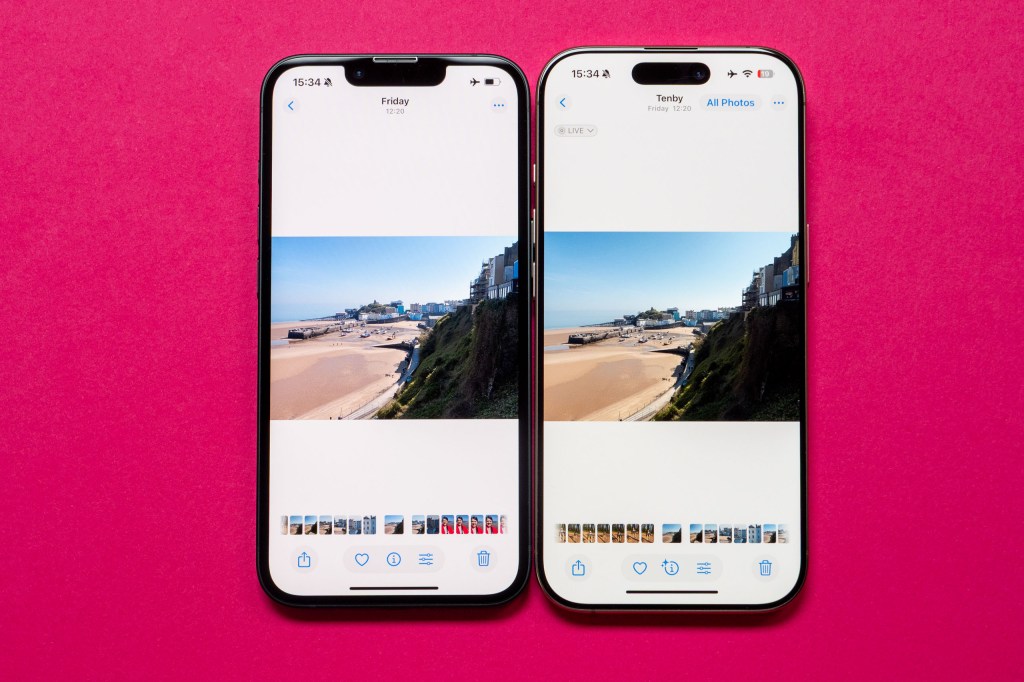
iPhone 16e vs iPhone 16 Pro: Image Quality
I took photos with both the iPhone 16 Pro and the iPhone 16e in a variety of different situations to allow me to directly compare the two. The image taken with the 16e is always on the left, the 16 Pro always on the right.


Images from both at the 1x lens are pretty good, with nice colours and plenty of detail. Although Apple says the lenses aren’t the same, I’d be hard pushed to spot any real differences here, really. In terms of the basic image quality in good conditions and from the lens I use most often, I’d be more than happy to keep the 16e.

The ultrawide lens is something I use fairly often on my 16e. I could probably live without it if I had to, but the same is things for loads of things I enjoy – I simply don’t want to give up the ultrawide having had one for a number of years. It’s also disappointing not to have one when many other budget phones (Androids) have one – it feels like a punishment for being an iOS enthusiast. I can’t provide you a slider here as there’s no ultrawide to compare it against – but here’s the angle of view you’d get from an iPhone 16 Pro (or any other iPhone with an ultrawide).


Both the iPhone 16 Pro and the iPhone 16e have the in-sensor 2x cropping option as shown here. They’re both pretty good and its what allows Apple to claim that the iPhone 16e has a “2-in-1” lens. I think that’s a bit of a cheeky claim to be honest, but the pictures do come out well nonetheless. I’d be happy to use this regularly.


The third lens of my iPhone 16 Pro – the 5x zoom – is the one I use least often. Other people might use it all the time, but I’m generally not that bothered by this focal length. The iPhone 16e obviously doesn’t have a third lens, but you can digitally zoom to 5x and up to 10x (as seen here). The results aren’t particularly good, however, so I wouldn’t bother with them, whereas the 16 Pro’s are fairly usable if you want them. So while I probably wouldn’t miss the telephoto lens, if you’re somebody who would, then the 16e will be lacking something for you.


During the course of my experiment, I realised I used macro / close-up shooting a lot more than I realised. Granted, it’s often for things like photographing a passage from a book I want to remember or reference later, but sometimes it’s also for higher photographic pursuits. Things like close-ups of small models, flowers and and even fruit is something I would miss not being able to capture quite so well if I was to give up on my iPhone 16 Pro permanently. Look how close I can get with the 16 Pro – try to shoot the same scene with the 16e and all you’ll get is a blurry mess.


I don’t shoot in low light all that often, but it’s good to know that when I do, I have a phone with decent enough quality to cope with it. At 1x, both do a reasonably good job, but if you’re looking closely you can see that the iPhone 16 Pro has more detail and far less smudging. Look at the branches of the trees – the outlines are a lot crisper. Would I miss this ability with the iPhone 16 Pro – well, a bit, not a huge amount – but if you spend more time than I do shooting this kind of thing then you might feel differently.


OK so here’s where I’ve got some real problems with Apple and its decision making. On face value – excuse the pun – the Portraits created by both aren’t a million miles from each other. However, there are some big problems for me. First of all, the lack of automatic portrait recognition allowing me to blur the background later is something I would miss enormously. It’s something I use all the time – I might grab a quick reaction shot of my daughter and realise it would be better with the blurred background. I probably use this feature at least three or four times a week. Secondly, the fact that the iPhone 16e only recognises human subjects means that shallow depth of field shots of my beloved pet dachshund are off the table. Why has Apple done this? This is a pure software limitation in both cases. It’s there purely to make you buy a more expensive iPhone. It’s probably for this alone that I would not buy an iPhone 16e.


As the selfie cameras appear to be the same, the results do too. Both are fine, and both give you the option to shoot Portrait effects. Remember again though that with the 16e, you won’t be able to add the Portrait option later, you need to shoot it as a Portrait first.
iPhone 16e vs iPhone 16 Pro: Price and Value for Money
So here’s where things get interesting as we’re talking about saving cash.
If you desperately want an iPhone with a 16 in the title, then the 16e is the cheapest way you’re going to currently be able to do that. It’s still not cheap though, starting at $599/£599 for the base 128GB model.
Still, that’s a decent chunk of change compared with the iPhone 16 Pro, which starts at $999/£999 for the 128GB model. These are RRPs, and you can already find the iPhone 16 Pro a bit cheaper from some retailers.
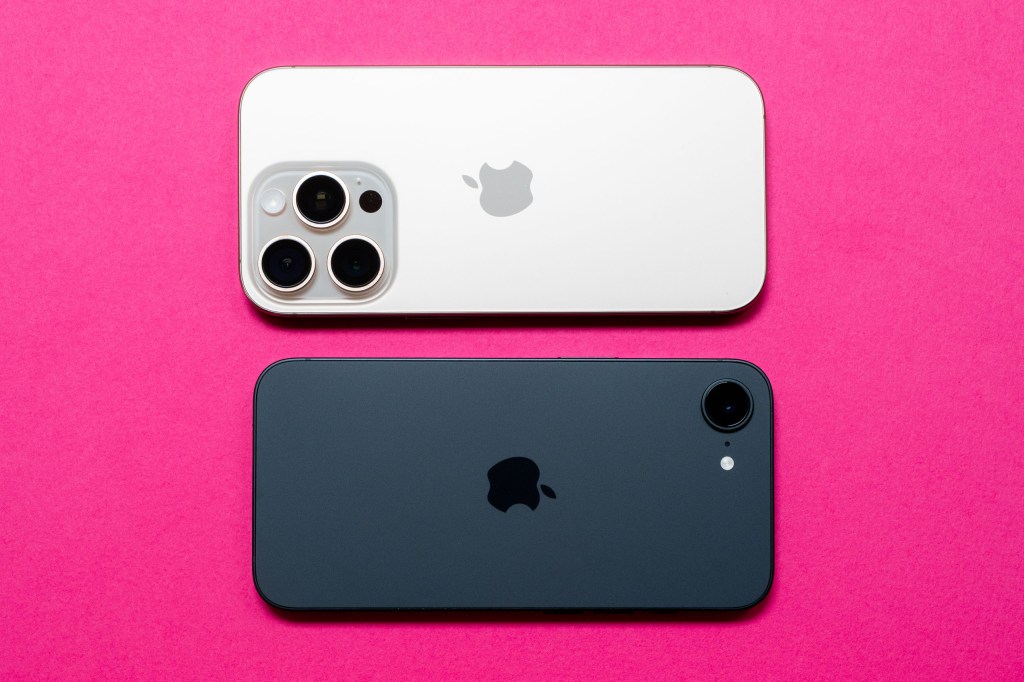
Regardless, cheapness doesn’t necessarily equate to good value for money. For the amount which you *don’t* get from the nearly $600 iPhone 16e, it’s hard to suggest that it offers anywhere near good value, whereas while the $1000 iPhone 16 Pro is a lot more expensive, you also get a lot more for it.
If you’re trying to save cash, realistically what I’d do is go for *neither* option. Instead, buy an iPhone 14 Pro – you can get them second hand for less than the 16e. You won’t get Apple Intelligence, but so what, you can live without that – we all can I reckon.
OK, so you really want Apple Intelligence? If you insist, get an iPhone 16 (not Pro, not e) and you’ll still have better value for money – albeit at a higher starting price point. You might also be able to get hold of an iPhone 15 Pro on the second-hand market for a good, price too.
Verdict
At the start of my time with the iPhone 16e, I wanted to see if I thought I could realistically get rid of my expensive iPhone 16 Pro and live with the budget model.
Well, I mean, of course I could. Just in the same way I could live without ice cream or Lego – but why would I want to? While the general basic image quality of the iPhone 16e is pretty good, there’s just too much I’d miss about the iPhone 16 Pro that I’d be happy to sacrifice for the cash saving.
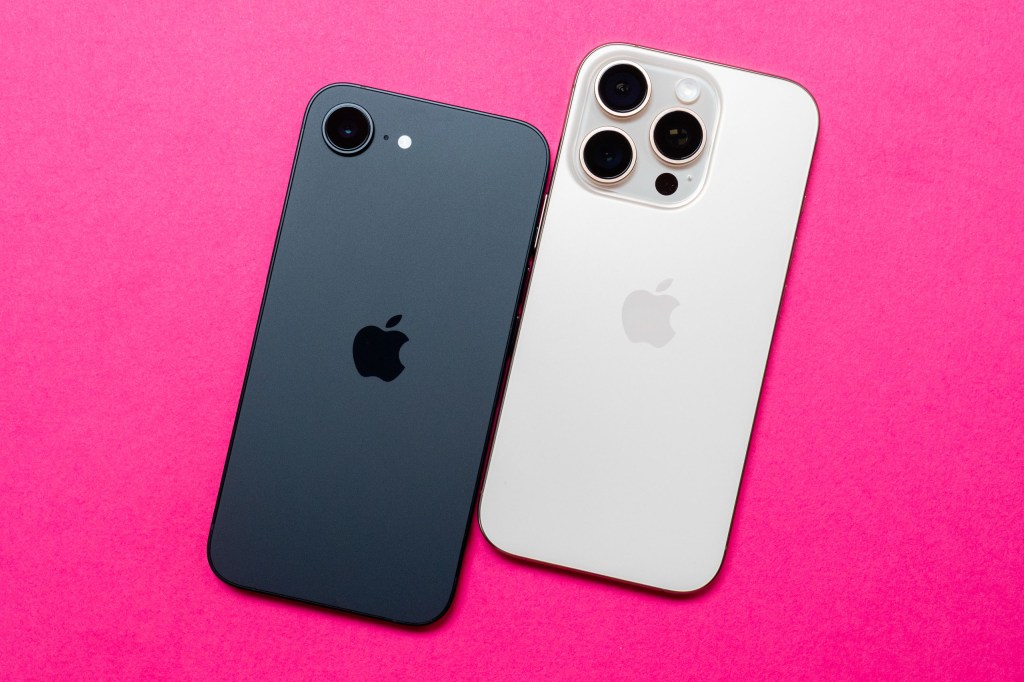
There’s the ultrawide lens, which I use fairly frequently. There’s the telephoto lens, which I use less often but still enough to miss it a bit. There’s the better low light performance. There’s the opportunity to get close-up shots of things (did I mention I like Lego). Most of all there’s the stupid, stupid software limitations for the Portrait mode on the 16e that really gets my goat. Non-camera wise, the iPhone 16 Pro has a brighter screen, a Dynamic Island, MagSafe compatibility and admittedly I haven’t mentioned this before, but it’s available in (very slightly) more interesting colours too.
So no, I won’t be trading down on this occasion. I’ll keep my iPhone 16 Pro for now, and we’ll see what happens with Trump’s tariff wars to the prices of the new iPhone 17 Pro series, likely to launch in September.
Which would you favour?

